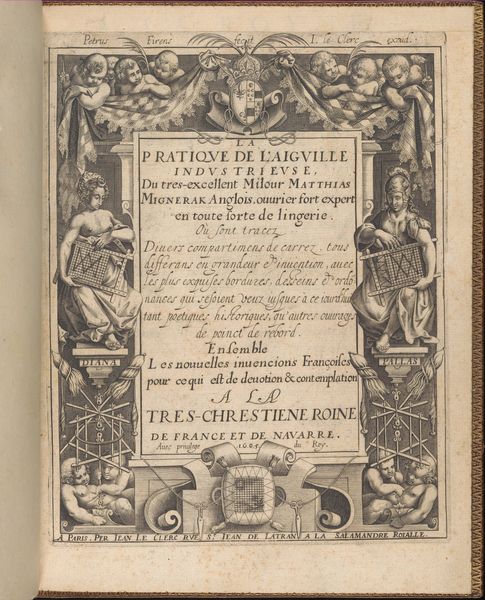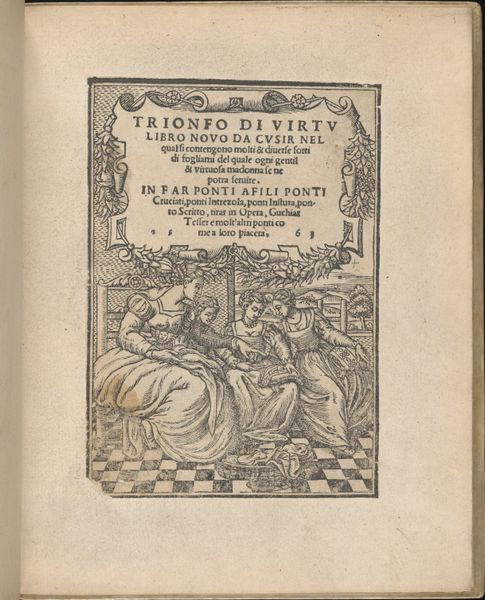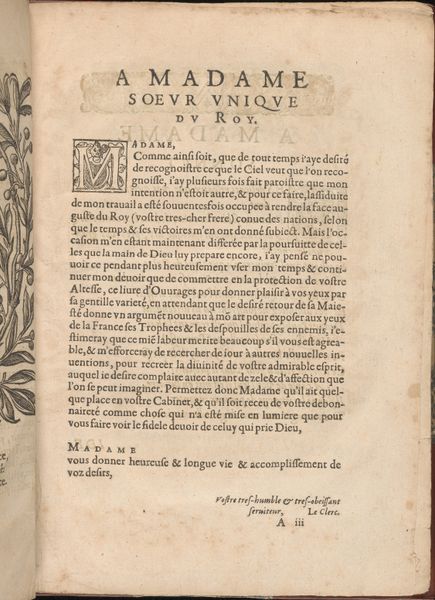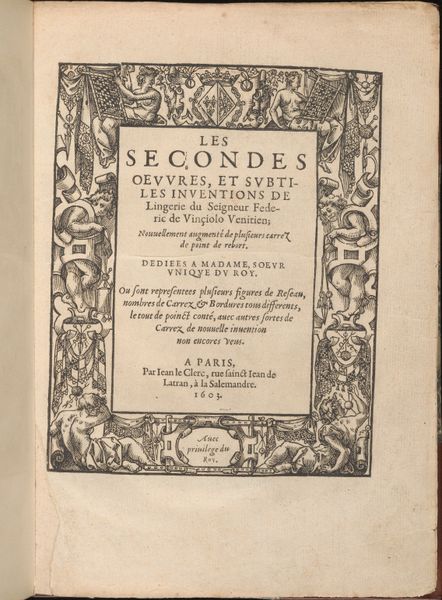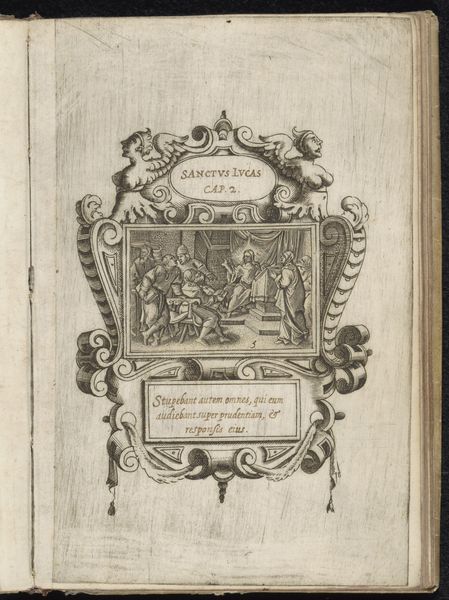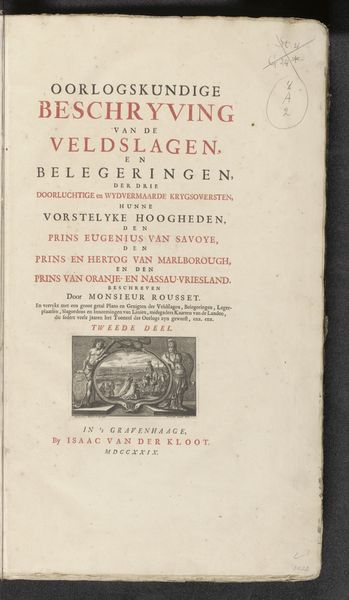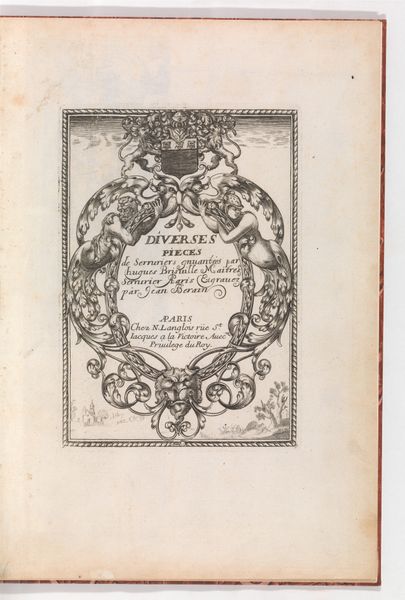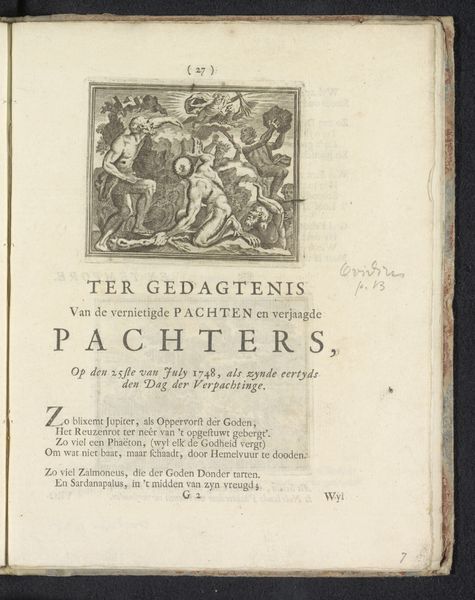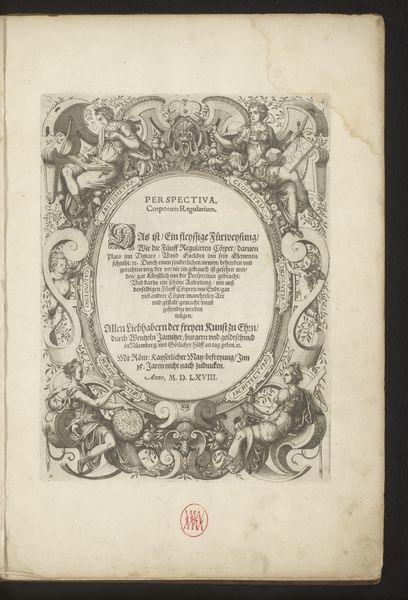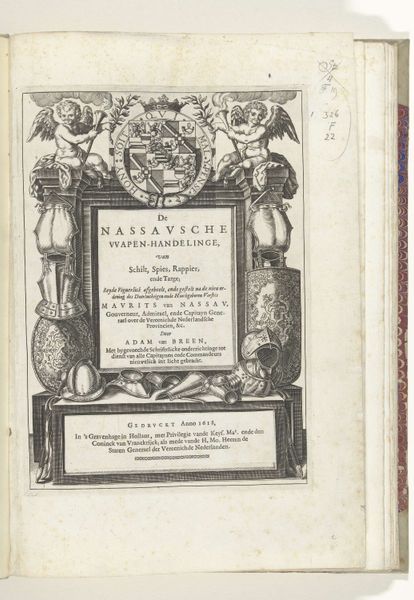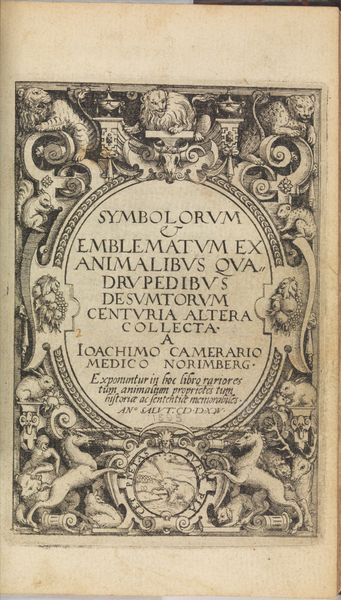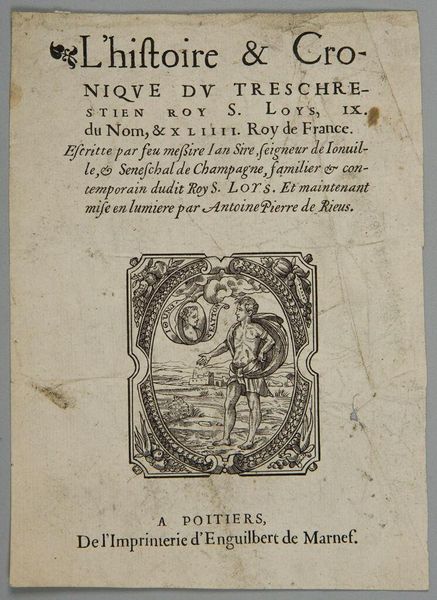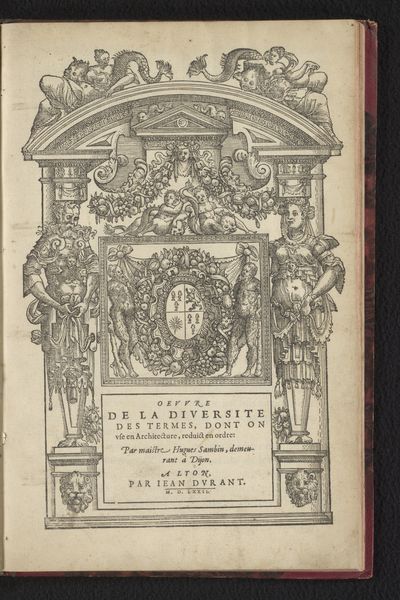
Les Singuliers et Nouveaux Portraicts... Part I title page (recto) 1588
0:00
0:00
drawing, print, paper, typography, engraving
#
drawing
# print
#
book
#
paper
#
11_renaissance
#
typography
#
engraving
Dimensions: Overall: 8 1/16 x 6 5/16 in. (20.5 x 16 cm)
Copyright: Public Domain
Curator: Well, let’s have a look at this. We are viewing the title page from “Les Singuliers et Nouveaux Portraicts…” published in Paris in 1588. This is Part I of the book by Federico de Vinciolo and it includes engravings and typography on paper. Editor: Immediately, I’m struck by how densely packed with visual information it is, a little world in a frame! It exudes the serious mood typical of this era. The typography is obviously central, but then your eye is drawn to all these figures and ornaments placed around it. Curator: Absolutely. What we have here is more than just a title page; it is a carefully constructed symbolic presentation. It is important to consider Vinciolo's intentions. He presents new portraits "for all kinds of linen works," dedicating it to the queen, which instantly elevates the status of something as commonplace as linen and lace-making to the aristocratic sphere. Editor: The idea of elevating craft speaks volumes. It is an interesting look at how art blurs into the daily life and also comments on the status of women involved in these practices at the time. How were these patterns, presented as portraiture, understood back then? Curator: “Portraits” in this sense moves away from depicting a specific person. They become more abstract and ornamental; perhaps each pattern becomes a little emblem of aspiration, domestic skill, a kind of symbolic identity through craft, particularly lace-making techniques. Think about what lace meant at this time. Lace denoted luxury, status and was used as embellishments on courtly clothing; these designs visually participate in the aspirations and construction of noble identities. Editor: The page gives such a strong sense of history and societal forces intertwined. What an amazing record. To consider something like lace not as mere fabric but a vehicle of expression, a tool within society... I will never look at lace the same way! Curator: Precisely. It holds a complex understanding of symbols in social and cultural spaces.
Comments
No comments
Be the first to comment and join the conversation on the ultimate creative platform.
